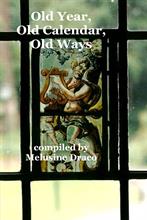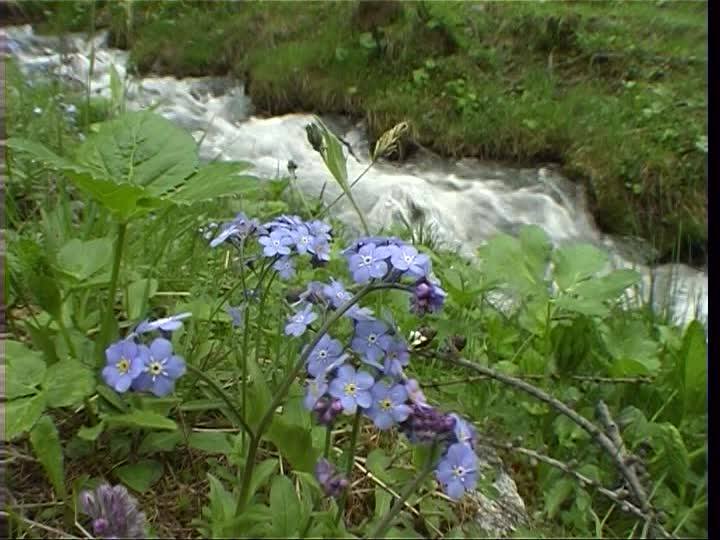
As most of my readers will know, I have a fascination for odd and obscure historical facts that are hidden away in the millions of sources that outstrip and confound the confines of the Internet – it’s finding them that presents the stimulation and the challenge. If we merely rely on the regurgitated information of contemporary paganism not only does our mind become stagnant, but for those who follow the Craft of the witch, so do our magical abilities.
In traditional British Old Craft, ours is a nameless god – a composite of all the images from the ancient world that The Orphic Hymns hailed as:
I call strong Pan, the substance of the whole,
Etherial, marine, earthly, general soul,
Immortal fire; for all the world is thine,
And all are parts of thee, O pow’r divine.
Which probably explains why in Coven of the Scales schooling, Meriem Clay-Egerton always
saw Pan as the Horned God ... and the Horned God as Pan. This was a traditional British Old Craft coven that honoured Aegocerus the ‘goat-horned’ – an epithet of the Greek Pan – not
Cernunnos, the stag-horned deity the Celts had brought with them from northern Europe. It should also be understood that although Coven of the Scales held firmly to the philosophy and
opinion that all faiths were One and all Paths led to the same Goal, it did not advocate what is now referred to as ‘eclectic paganism’. So how on earth could this ancient, pre-Olympian
Greek deity find his way into the beliefs of traditional witchcraft in Britain?
Pan: Dark Lord of the Forest and Horned God of the Witches is an exploration of how an Old European deity who, even in Classical Greece defied their ethnic love of order and refused to be pigeon-holed, categorized and compartmentalized to fit into the Olympian pantheon. This ancient libertine was too scruffy and unkempt to be included among these exalted creatures – but then again, he was far too powerful to be ignored. Needless to say, Pan possessed all the conventional abilities of the Olympian gods such as super-human strength and longevity, shape-shifting, stamina and resistance to injury. He also had some mystical powers, especially those associated with music and dance, and its magical potency; not to mention a very wily mind, a raucous sense of humour and a shout or scream that instilled terror in the hearer.
Yet Pan’s image retained its immense power when Greek myth passed into Christian myth, with Pan’s cloven-footed appearance providing a perfect concept for the Devil in the eyes of the new, evolving priesthood. In ancient and medieval times the common people were taught by being exposed to holy images, and fear would not have been instilled in them by being shown pictures of the Olympian ‘beautiful people’; particularly during the medieval period, when the Devil was conceived as having horns and a goat’s hindquarters. Pan’s activities are those of a giver of fertility; hence he is represented as vigorous and lustful – the latter being one of the Devil’s bestial characteristics and a condition abhorrent to the Christian clergy.
Nevertheless, once an image has become firmly engrained in the cultural unconsciousness it is extremely difficult to dislodge. Joseph L. Henderson of the Jung Foundation described it as an area of historical memory that lies between the collective unconscious and the manifest culture pattern; having some kind of identity ‘arising from the archetypes of the collective unconscious which, on one hand, assists in the formation of myth and ritual, and on the other, promotes the process of development in individual human beings…’ These mythological motifs, or primordial thoughts, lie dormant until some dream, vision or epiphany brings them to the fore – and often with conflicting emotions between faith and instinct.
Because behind every myth, fairy tale and legend – hidden within the art, song and structures of those ancient times – is an encoded layer of wisdom, science and truth passed down through countless generations. Between 1890 and 1926 there was an ‘astonishing resurgence of interest in the Pan motif’. He appears in poetry, in novels and children’s books, and as the eponymous ‘Piper at the Gates of Dawn’ in Kenneth Grahame’s The Wind in the Willows (1908), providing the reader with one of the most evocative images of the Great God Pan ever written:
...saw the backward sweep of the curved horns, gleaming in the growing daylight; saw the stern, hooked nose between the kindly eyes that were looking down on them humorously, while the bearded mouth broke into a half-smile at the corners; saw the ripping muscles on the arm that lay across the broad chest, the long supple hand still holding the panpipes... saw the splendid curves of the shaggy limbs...
REVIEWS:
As you read this, Pan is opening his strange eyes with those lucid, rectangular pupils which gives him huge peripheral vision. He is observing you very quietly. Look up from the page, look around. He is here, now. Believe what I say!
Melusine Draco’s book is filled with pleasing seeds and roots that she has collected from obscure, musty corners of the mythological and literary forest. Just brooding upon them ensures that they will be planted and grow in your consciousness, often in startling ways. And if you ever find yourself on hilltops in Wiltshire and see an elegantly ageing and once-handsome chappie chanting: Io Pan, Io Pan, Io Pan, Pan Pan! then you’re probably hearing me putting to good use the practical evocations she gives. Alan Richardson, author of Priestess and The Old Sod, biographies of Dion Fortune and Bill Gray
A fascinating and interesting read packed full of historical and mythological information and knowledge. Draco has researched her subject well, illuminating Pan as never before. His mystique and folklore jump off the page and make you yearn to find him in the forest! Draco is a well respected instructor in British Old Craft and she shares her wisdom in her many books on traditional witchcraft and magic. This latest book richly adds to her collection. A must read for those interested in learning more about the Horned God with practical exercises to enhance the reader’s consciousness along the way. Enter the woods – if you dare! Sarah-Beth Watkins, Publisher Chronos Books
Just finished this book and I highly recommend it. I’m a polytheist so I don’t believe in one overall horned god and I’m happy to say this book can appeal to all. I’ve studied Pan’s lore for many years yet there are pieces of lore in this book I have not seen and also insight that made me stop and think. Great book. Pan & Hecate FB page
A thoroughly enjoyable journey through Pan’s forest of legend and myth as expressed through art, literature, poetry and spiritual beliefs from ancient through to modern times. As always, Melusine Draco’s fine scholarship and insightful perspectives elevate what might have been a dry academic study to that of intriguing discovery. Also appreciated are the author’s inclusion of personal experiences connected with the Dark Lord. Highly recommended! M Orlando
From the start, I was impressed with this book. The author did a fantastic job of researching the material she used as sources, including many passages to prove the points she was making. I liked her informative writing style and thought this was a really interesting look at Pan through the ages and different cultures. A lot of times, books like this can quickly become redundant and lose my interest, but this one didn’t. I enjoyed reading this and felt like I learned quite a bit from it by the end. If you are interested in the horned god, this is a book that you don’t want to miss. Ionia Froment | Goodreads /NetGalley
Pagan Portals: PAN – Dark Lord of the Forest and God of the Witches by Melusine Draco and published by Moon Books : ISBN 978 1 78535 512 7 – pages 84 : UK£5.99/US$9.95 Available from www.moon-books.net



 RSS Feed
RSS Feed